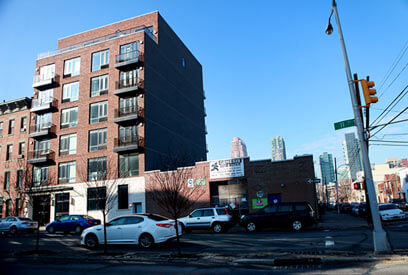By Rich Bockmann
Builders in Queens looked toward the sky in 2013 as they increasingly put unused development rights to work in order to push their outsized construction projects past the city’s zoning limits, though the market for the assets remains up in the air when it comes to prices.
All told, 127,420 square feet of development rights were transferred in Queens last year, an increase of about 3 percent from 2012, a TimesLedger Newspapers analysis of property records found.
The height and bulk of new buildings are limited by the city’s zoning laws, but the regulations do allow owners of adjacent, underdeveloped properties to sell builders their unused space, which in hot markets can become a lucrative commodity just the same as real estate.
Over the past two years, Heatherwood Communities has bought up the lion’s share of development rights in Queens for its nearly 500,000-square-foot tower at Queens Plaza in Long Island City, which will be the borough’s tallest residential building when it tops out at 596 feet.
The company paid $12.6 million in 2011 for the 17,500 square-foot property at 42-12 28th St., which is zoned for up to 175,000 square feet of development, where it plans to erect a 477-unit, 58-story tower.
In order to build bigger, Heatherwood purchased 86,630 square feet of air rights for the project in 2012 and bought up another 102,430 square feet of rights in 2013, paying $100 per-square-foot in both transactions.
Heatherwood was not the only developer buying the LIC sky in 2013.
Another outfit, Brooklyn condo builder Kora Developers, paid approximately $120 for each of the 2,300 square feet of rights it purchased in December for its seven-story, 21-unit mixed-use project in the Hunter’s Point section of the neighborhood.
The developer shelled out $2.83 million a year ago for the 5,000-square-foot lot on the corner of 11th Street and 47th Road, which zoning limits to 20,000 square feet of development.
Kora principal Alex Kostovetsky said the building will cap out around 26,000 square feet with about 4,000 square feet of commercial space in the cellar, which he said does not count toward the building’s limit.
Eric Benaim, president of the real estate firm Modern Spaces, brokered the air rights deal between Kora and their next-door neighbor and said it took some explaining on both sides.
“We were working with [Kora] from the very early stages and noticed the top floor only had one apartment — basically it had a lot of pretty much roof space,” he said.
Benaim suggested Kora purchase excess development rights from the mom-and-pop property owners next door — also Modern Spaces clients — who, after some explaining, realized the assets they had overhead.
“After they understood what was being done, they kind of had a number in mind,” said Benaim, who expects air rights purchases to increase in the coming year. “I think over here you’re going to see it more and more. Sites are restricted and you can maximize your costs. If you’re paying $200 a foot, you can buy an extra thousand for $100, $120 a foot. You get a bigger pie and that brings down cost.”
Elsewhere in Queens last year, the developer of a 3-story office/retail building in Richmond Hill transferred 8,970 square feet of rights between two properties it owned, and the company putting up 110 units of affordable housing in LIC north of Queensboro Plaza added 13,720 square feet of rights to clear the way for its 17-story tower.
In markets like midtown Manhattan where the rights are frequently traded, the price developers are willing to pay for the assets is easier to gauge, but in places where purchases are few-and-far between the market is still difficult to predict.
Historically, most air-rights transfers in Queens occur when a single owner — or related entities — combines the development capabilities of two or more lots he or she owns.
For instance, in 2012 the Macedonia A.M.E. Church in Flushing transferred about 35,680 square feet of unused rights to the lot next door where the church is constructing a 14-story, 140-unit affordable housing project.
Transfers like this provide no information about the price for air rights because no money is exchanged, but they do indicate developers’ inclinations to look toward the assets to help their projects grow.
Josiah Madar, a research fellow at New York University’s Furman Center for Real Estate and Urban Policy, said there is still too little data to draw specific conclusions about the market for development rights in Queens.
“That said, your data show that developers have been seeking opportunities to develop larger buildings through development rights purchases even outside of Manhattan, and if rents and prices continue to rise, it’s fair to assume developers will continue to explore ways to make projects larger,” he wrote in an e-mail.
Reach reporter Rich Bockmann by e-mail at rbockmann@cnglocal.com or by phone at 718-260-4574.































